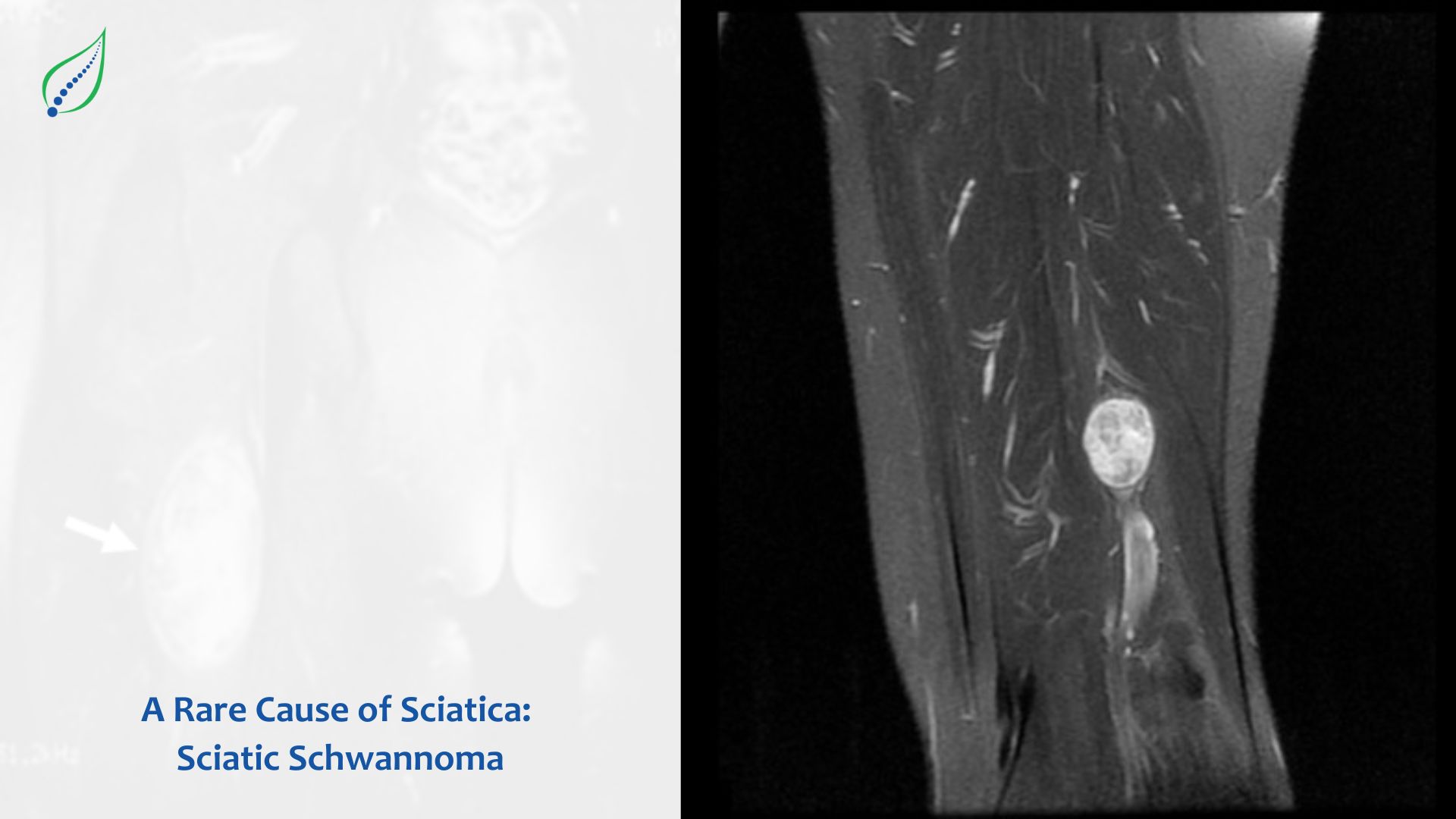A Rare Cause of Sciatica: Sciatic Schwannoma
When you have sciatic pain, which is typically a dull ache that spreads from your lower back into your leg, the usual suspects such as a herniated disc or compressed nerve might be what come to mind. Yet in uncommon situations it could be from an entirely different cause: a tumor growing on the actual sciatic nerve - known as schwannoma. This is not common but very important to think about for those with ongoing sciatica; both patient and medical professional should keep this possibility in mind.
What is a Schwannoma?
For grasping sciatic schwannomas, we must initially examine schwannomas as a whole. These growths come about from Schwann cells, and these are essentially important within your peripheral nervous system. In simple terms, Schwann cells surround the nerve fibers to create a protective covering that assists in carrying nerve messages all around your body.
Schwannomas are usually not malignant (cancerous) and they grow slowly. They may appear on different nerves in your body, but the most frequent kind is vestibular schwannoma which impacts the nerve that links your inner ear to the brain. Usually, these types of tumors do not cause a risk to life. However, they can create issues as they increase in size and press against surrounding tissues.
Sciatic Schwannomas: A Needle in the Haystack
Schwannomas that impact the sciatic nerve are very uncommon, making up less than 1% of all schwannomas. This rarity can cause a delay in diagnosis because signs might be initially linked to usual reasons for sciatica by patients or doctors alike.
The largest nerve in your body, called the sciatic nerve, starts from the lower part of your back and goes through hips and buttocks before reaching down each leg. If a schwannoma grows on this nerve it might cause symptoms like those seen with regular sciatica such as:
- Pain radiating from the lower back down the leg
- Numbness or tingling sensations
- Muscle weakness in the affected leg
- A burning or aching pain
Diagnosis: Connecting the Dots
Diagnosing sciatic schwannomas is not easy because they are very rare. You need to have a strong suspicion and carefully examine these factors:
- Ongoing symptoms: Sciatic pain that does not go away with regular treatments for disc-related problems could be reason to look deeper.
- Palpable mass: Often, a sciatic schwannoma can be touched and sensed as a lump existing along the path of this nerve.
- Tinel's sign: When you tap your fingers gently on the nerve pathway, it can create tingling or electric shock-like feelings.
- Imaging studies: MRI is like the best method to recognize these tumors. It can show how a schwannoma looks and where it's located in relation with the sciatic nerve.
Treatment: Precision is Key
After being diagnosed, surgery to remove the sciatic schwannoma is the main treatment.
After the surgery, it is common for patients to feel a considerable improvement in their symptoms. But complete recovery may take time as the nerve heals and adjusts. Many times, physical therapy is very important to regain strength and function in the leg that was affected.
The Importance of Thorough Evaluation
For patients and healthcare providers, the story of sciatic schwannomas is a valuable reminder. If someone has persistent sciatica that does not match the usual pattern or react to normal treatments, it's very important to think about uncommon causes.
For patients, this implies taking initiative in seeking further evaluation if symptoms do not improve or get worse despite treatment. You can ask your doctor if there are other possible diagnoses or whether more imaging studies should be considered.
For doctors, keeping a strong suspicion for uncommon problems such as sciatic schwannomas may bring about an earlier recognition and improved results. A detailed investigation of the physical state, which includes examining for masses on the course of the nerve and evaluating if Tinel's sign is present, might offer useful hints.
Looking to the Future
Though sciatic schwannomas are still quite uncommon, the growing understanding about them and better imaging methods could result in their more regular detection. This might save people from enduring extended durations of pain without any clear cause along with ineffective therapies.
Study on schwannomas is still ongoing, and genetics researchers are specifically investigating the genes that participate in its formation. This could potentially pave the way for fresh avenues of treatment or even preventive methods for individuals with increased susceptibility to schwannomas.
Conclusive Words
Though it is not a usual trigger for sciatica, this tale of sciatic schwannomas reminds us why they are crucial when differentiating the diagnosis of enduring sciatic pain. It highlights how complicated our body can be and stresses on the significance of complete medical exploration when symptoms do not progress as anticipated. For people suffering from such a rare condition, getting the correct diagnosis and cure could bring significant relief in their life causing them to live without pain again.

_1742973131.png)
_1742634080.png)

